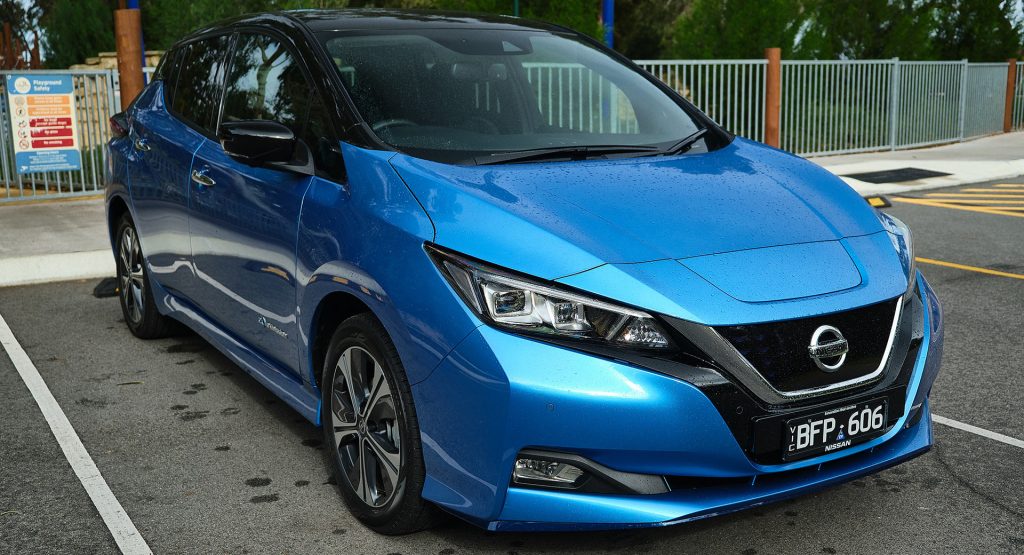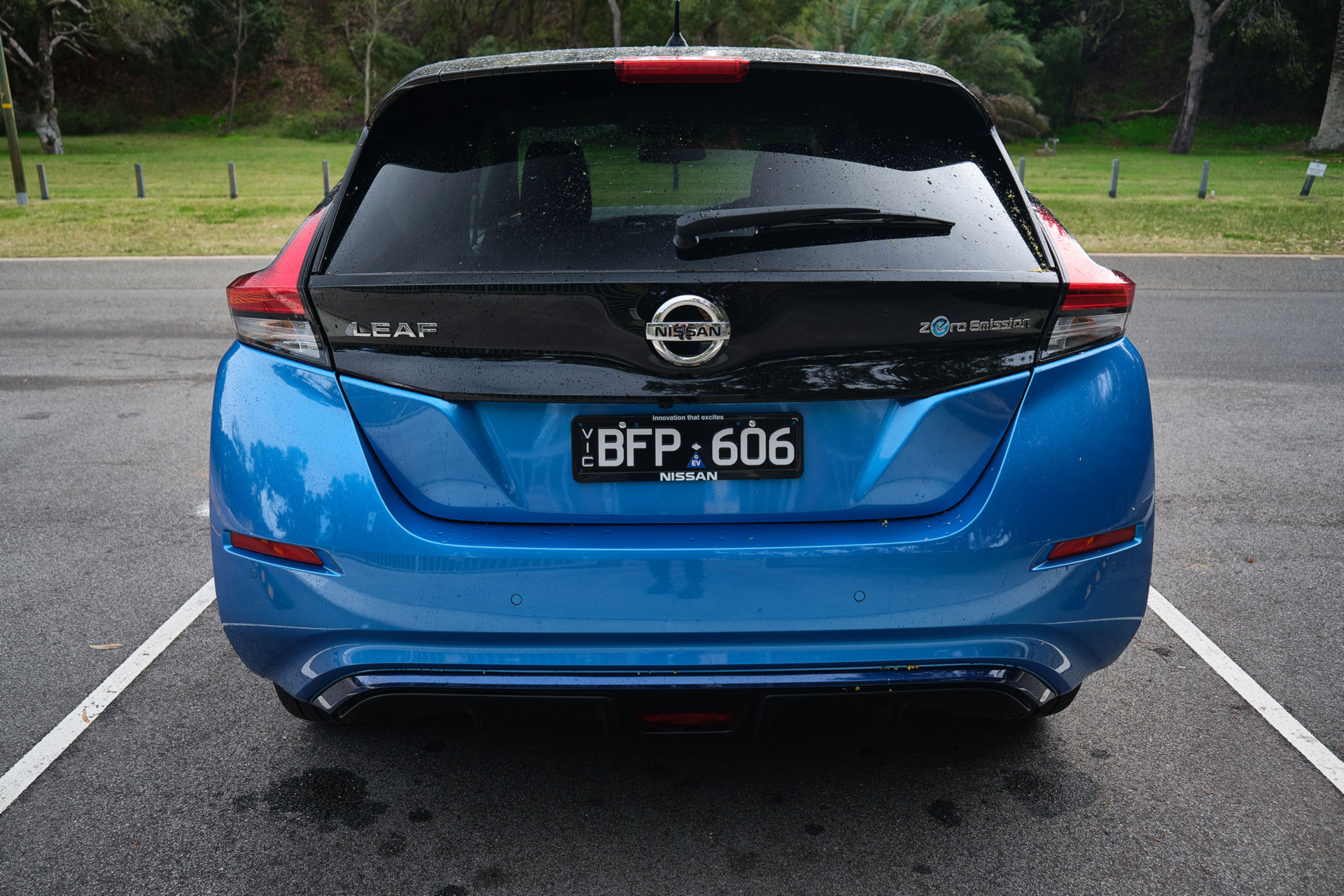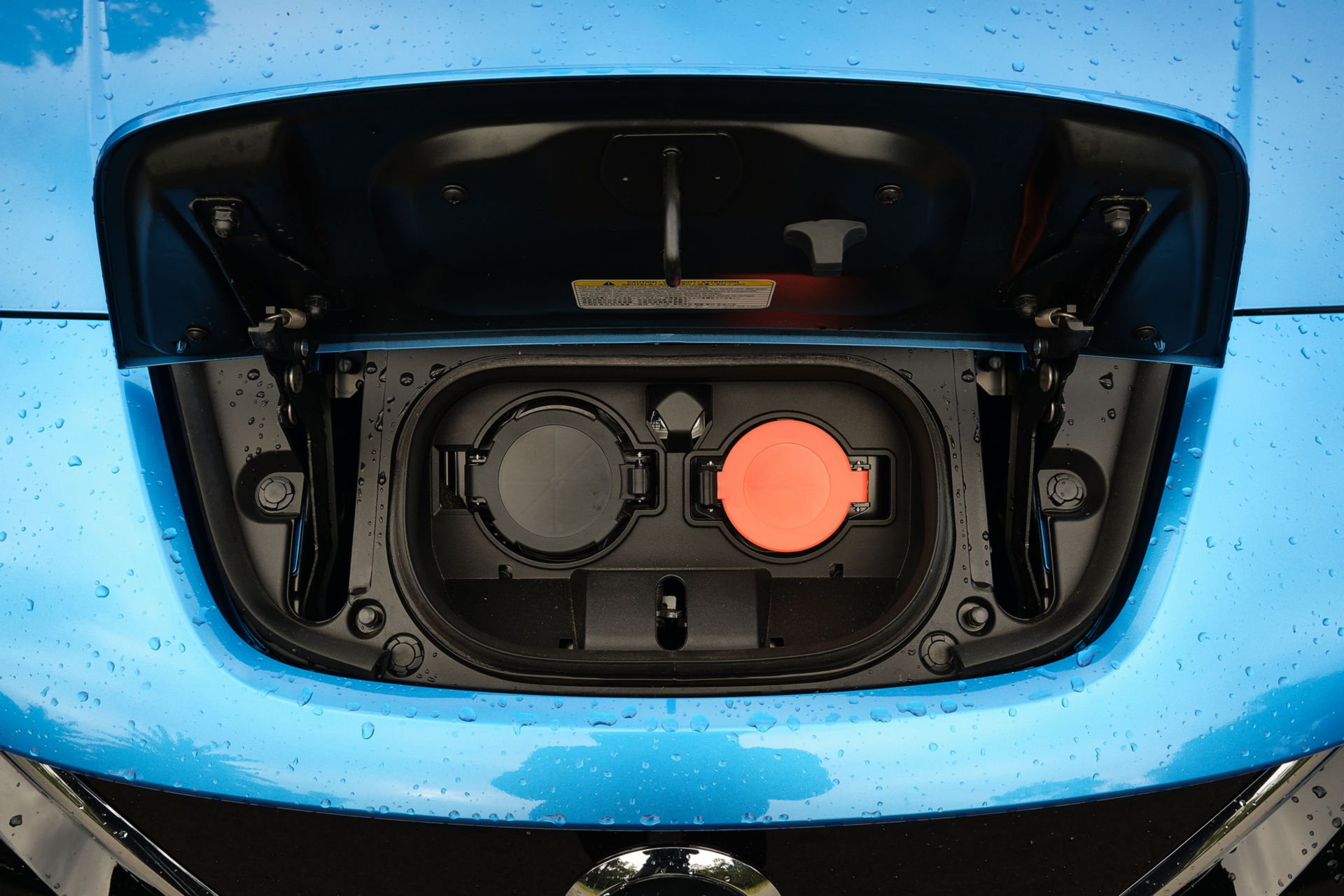
Electric vehicles don’t come much more iconic than the Nissan Leaf, the world’s first modern, mass-market EV. Its second generation, which was launched in Japan in late 2017, got a new flagship version, named the Leaf e+, in 2019.
As car manufacturers continue to try and outdo each other by giving their EVs greater and greater driving range, the Leaf e+ answers the call for those that have found the standard model with its 40 kWh battery pack not quite enough. The Leaf e+ gets a 62 kWh battery, making for quite a tempting proposition.
Eccentric Looks Remain
Approaching the new Leaf e+ for the first time, I was immediately struck by its size. The exterior design isn’t as controversial as the first-generation model but it still makes the EV stand out from other models in Nissan’s line-up. It also gives the Leaf the impression of being bigger than it actually is and from some angles, you could be excused for thinking it’s actually a crossover.
Found at the front are a set of large headlights and a black faux grille that houses the charging port. At the sides, you’ll notice the large windows and wheels that sit well within the arches. The rear is perhaps the most intriguing angle with L-shaped taillights and, in the example we tested, a black tailgate that contrasts the blue paintwork.
As more car manufacturers enter the electric vehicle sphere, we are seeing a trend of EVs no longer looking like EVs but more like ordinary cars. The 2021 Leaf e+ looks far from ordinary. Some buyers will like this, others won’t.
What About The Interior?
The Nissan Leaf e+ is available from AU$64,990 (US$48,965) in Australia, but the interior quality, sadly, does not reflect that price.
As unusual as the exterior is, the interior of the second-generation Leaf is rather ordinary and outdated. For example, you’ll find the same steering wheel as the previous-generation X-Trail and buttons for the heated seats borrowed from vehicles including the Navara. Nissan has applied some nice soft-touch leather across the dashboard and door panels but there remain some surfaces with scratchy, hard black plastic not fitting for the price.
Located directly in front of the steering wheel is a gauge cluster with an analog speedometer and a multi-function display on the left that shows all other important information. It works well and looks good but for an EV at this price, an all-digital gauge cluster would be nice. The center of the dash houses an 8.0-inch infotainment screen with Apple CarPlay and Android Auto that runs the NissanConnect system. While functional, the UI is dated and the screen isn’t particularly responsive to the touch.
Read Also: Nissan Critical Of Australian Government’s Reluctance To Incentivize EV Ownership
One of the strangest things about the Leaf e+ is the presence of a foot-operated emergency brake in an age where electronic parking brakes are becoming the norm. The driving position is also poor for tall drivers as the seats sit very high off the floor, offer minimal adjustment, and the steering wheel does not telescope towards you.
It’s not all bad news though. The Leaf offers excellent visibility and is very comfortable for long journeys. As long as you’re not sitting at the back, that is, as the rear seats are positioned high and the roof is surprisingly low. At 6’2 and with the driver’s seat in my preferred position, my legs were pressed up hard against the seat and my head easily hit the headliner. Smaller rear-seat passengers won’t encounter any such issues. Trunk space sits at 435 liters (15.3 cubic-feet) with the rear seats up. It increases with the seats folded down but, unfortunately, they do not fold flat and the presence of a Bose subwoofer eats up space.
What Is It Like To Drive?
Issues related to the interior fade into insignificance when you get out on the open road and start to drive the Leaf e+.
As mentioned, it has a 62 kWh electric motor and is driven by a single electric motor with (214 hp) 160 kW and 250 lb-ft (340 Nm) of torque powering the front wheels. Nissan says it will hit 62 mph (100 km/h) in 6.9 seconds.
Nissan’s decision to make the Leaf front-wheel drive is an interesting one, particularly as some other new EVs like the Honda e and Hyundai Ioniq 5 use rear-wheel drive platforms. While these rear-wheel drive layouts may better appeal to driving enthusiasts, the front-wheeled layout of the Leaf e+ works very well on the street. Grip is good and turn-in is surprisingly sharp. It will push into gentle understeer if you take a corner a little too fast but for most drivers, this is a far safer alternative to oversteer.
The downside of sending all the car’s power and instantly available torque to the front wheels is that there is quite a lot of torque steer when you floor the throttle, akin to the levels of torque steer you’ll find in hot hatches like the Hyundai i30 N and Renault Megane R.S. Trophy. That’s not a criticism, as I found the torque steer to be quite entertaining, but it’s certainly something to keep in mind if you’re looking to buy a Leaf e+. If the roads are wet and you depress the accelerator a little too much, the front tires will spin and struggle for traction at up to 80 km/h (50 mph) before finally hooking up.
Efficiency At Its Finest
Our favorite aspect of the Leaf e+ was the excellent e-Pedal system. Enabled with a simple switch next to the gear selector, e-Pedal allows for one-pedal driving thanks to a regenerative motor. It is smooth and predictable and while it takes a little while to get used to just how effective it is, using only the accelerator pedal soon becomes second nature. During my week with the car, I had e-Pedal engaged most of the time. The only slight criticism we can make is that the transition from the e-Pedal to the actual mechanical brakes isn’t particularly smooth. I discovered this when I had to make an emergency stop to avoid hitting a kangaroo while the e-Pedal was enabled.
Nissan says that the Leaf e+ can travel 385 km (239 miles) on a single charge according to the WLTP standard. That figure seems just about spot on based on the 252 km (156 miles) worth of driving we did along city streets and some highway jaunts. For the vast majority of motorists, range anxiety should not be an issue with the Leaf e+, unless you are planning to drive more than 300 km (186 miles) in a day which, for most people, is a very rare occurrence. It also supports 100 kW charging speeds that means the battery can be topped up from 20 per cent to 80 per cent in 45 minutes using a fast charger.
Should I Buy One?
All in all, the 2021 Nissan Leaf+ is a very compelling electric vehicle, despite the drawbacks of its interior. However, in Australia, it is simply too expensive.
At AU$64,990 (US$48,965), the Leaf e+ simply can’t compete with the Tesla Model 3 Standard Range Plus that’s priced from AU$69,551 (US$52,409). In addition, with both the Hyundai Ioniq 5 and Kia EV6 arrive Down Under within the next six to nine months and are expected to start between AU$60,000 and AU$70,000 (US$45,205 – $52,739), it’s hard to imagine how the Leaf e+ will compete.






































Photo Credits: Brad Anderson/CarScoops
Article Source and Credit carscoops.com https://www.carscoops.com/2021/07/driven-2021-nissan-leaf-e-is-a-compelling-ev-but-can-it-justify-the-price/ Buy Tickets for every event – Sports, Concerts, Festivals and more buytickets.com








Leave a Reply
You must be logged in to post a comment.